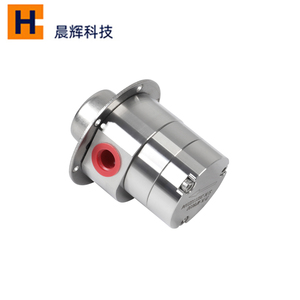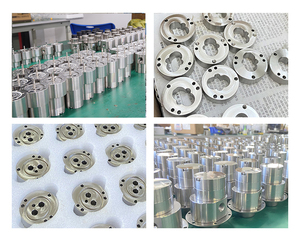
All categories
Featured selections
Trade Assurance
Buyer Central
Help Center
Get the app
Become a supplier

(1028 products available)


































The piezo micro pump, also known as the piezoelectric pump, is a versatile and crucial component in industries such as electronics, optics, and medical equipment. Several designs, which differ in operational principles, flow, and pressure capabilities, exist.
Pulsating Pumps
These pumps are valuable because their operation is similar to the human heart. Such a pump's operation generates a flow through the valves' opening and closing. The pump is advantageous in sectors that need precise liquid delivery, which includes the medication dosage systems in pharmaceutical sectors and inkjet printer heads.
Continuous Pumps
Such pumps employ the piezoelectric element's expansive and contraction capability to create a steady flow of liquid. Unlike the pulsating kind, these pumps do not have valves and, therefore, offer a non-pulsating liquid flow. Continuous pumps are heavily used in the optical industry to transport adhesives and other fluid-based items.
Jet Pumps
Fluid and gas pumps use a piezo micro pump to create a pressure differential that induces fluid flow. When fluid is forcibly pumped through a narrow passage, it creates a suction effect. Jet pumps are predominantly used in gas transportation and scientific research.
Peristaltic Pumps
These pumps operate by a mechanism similar to the human intestine, where the piezoelectric elements act as the rollers that squeeze the tubing. The squeezing action forces the fluid through the tube. Such pumps are utilized where the pumped fluid must be kept sterile, for example, in medical and laboratory equipment.
Different types of piezo pumps are available for selection, based on specifications to different applications. As mentioned earlier, piezo pumps do not have mechanical seals, so these pumps have maximum durability while transferring chemical fluids. So, these pumps are used in many fields, such as chip production and the medical industry. These pumps are characterized by high precision and reliability in providing low but steady flow rates.
The basic parameters of a micro piezo pump are:
These are very small mechanical devices that turn electrical energy into mechanical energy. This helps the device to perform fluid pumping through some tiny plastic or metal tubes. These pumps have several parts, and even the smallest parts need to be taken care of in order for the pump to function effectively.
Check the power:
Check that the pump is connected to the right voltage source. Also, check the instrument for any signs of electrical surges or voltage fluctuation.
Examine the tubes:
There are chances that the tubing used might be blocked. This blockage can be caused by internal deposits or external obstruction. Make sure that there are no bends, kinks, or external damage to the tube.
Listen to the pump:
If the pump is working properly, it will produce some sound based on the type of pump. Before seeing the piezo micro pump, listen for any unusual sounds when it is working.
Inspect the liquid:
Always ensure that the correct liquid is used. The liquid should be clean and free of foreign materials. Check for any signs of liquid degradation or contamination.
Check the seals:
Shielding rings or seals are used to reduce leakage and improve pump efficiency. Leakage will occur if these seals have worn or damaged them. Examine all the seals and make sure you replace them if they are damaged.
Micro pumps are used in several fields based on their reliability and accuracy in delivering low flow rates. These pumps are helpful for medical people to give drugs and fluids in small amounts over a given time. This infusion pumping system is crucial in such surgery and health care processes.
In the optic business, micro pumps are commonly used in the assembly of optical instruments. The pump is used to transfer small liquid quantities, including adhesives and calibration fluids. Jet pumps are valuable in the research and development labs where fuel transfer and material measurement are necessary.
In the semiconductor industry, micro pumps are used to transfer chemical fluids during the wafer etching process. These pumps are good at controlling fluid flow, making them ideal for chip production.
Micro pumps are vital in drug delivery systems, providing precise control over the flow rate and pressure for accurate medication infusion. They are also found in diagnostic devices, enabling the quick movement of blood or other fluids for medical tests. In vivo health monitoring systems use micro pumps to deliver substances to keep patients healthy. These pumps are also used in surgical procedures for fluid management and in implantable devices to provide medication directly within the body.
Micro pumps are employed in the optical industry for precision fluid handling in the production and maintenance of optical devices. They assist in the movement of calibration fluids, manage the adhesives used in lens assembly, and maintain fluid environments for testing. The pumps' ability to provide precise control over flow rates and pressures is essential for ensuring the quality and performance of optical systems. Their application in areas like fiber optics, where small fluid volumes are crucial for protecting delicate fibers, underscores their importance.
The piezo micro pump is used in the semiconductor industry for chemical fluid transfer during critical manufacturing processes like wafer etching and chemical mechanical planarization (CMP). These pumps manage minute quantities of chemicals, ensuring precise control essential for the intricate procedures involved in chip production. Their ability to withstand harsh chemical environments while delivering stable flow rates makes them vital for maintaining safety and consistency in this high-tech manufacturing process.
Choosing the right piezo micro pump depends on several key factors, each essential for meeting specific operational requirements efficiently.
Application Requirements
The first consideration should be the application requirements. These requirements will provide the flow rate and pressure the micro pump needs to achieve. For example, infusion pumps require a constant and smooth flow rate but not high pressure, while inkjet printer heads need high pressure for effective printing.
Compatibility
There are several types of materials used to construct micro pumps, and they all differ in the kinds of fluids they can transport. Find out which material best suits your liquid, and avoid using materials that will corrode, wear, or damage the pump.
Size and footprint
Micro pumps are compact and designed to consume less space. These features enable them to be used in portable devices and confined environments. Check the size and footprint to determine if you can install them in the intended systems or machines.
Control
Micro pumps can be used with various control methods, such as electric signals. Choose the pumping device with the control methods that will be easy to implement for any project.
Reliability
These pumps are used in many industries, therefore, consider their long-term performance. Read customers' reviews to get reliable information on the micro pumps' performance.
Cost
The cost of micro pumps can influence the short- and long-term financial plans. When considering the cost, do not only pay attention to the initial purchasing cost but also consider maintenance, operational, and reliability costs.
A. These pumps are electrical devices that work by applying electric voltage to piezo ceramic elements. This voltage causes the elements to change shape, creating vibrations that generate pressure. This pressure pushes fluid through tiny chambers and tubes, enabling the pump to work fluid.
A. These pumps are capable of pumping different kinds of fluids. They can pump clean, corrosive, sterile, and viscous fluids. The viscuosity fluid is pumped by utilizing special designs and materials to ensure compatibility and efficient movement.
A. The flow rate and pressure of this pump are controlled by the voltage applied to the piezoelectric elements. Altering the voltage helps to adjust fluid delivery. This helps in providing precise and flexible control for various applications.
A. These pumps are ideal because they can control the flow rate and deliver small drug amounts precisely. They are also created to be sterile, which prevents contamination and ensures patient safety. Their compact size makes them easy to incorporate into portable medical devices.
A. When properly maintained and used under the right operating conditions, these pumps can last several years. Examples of factors that can affect the lifespan of this device are wear and tear, the type of fluid pumped, and exposure to extreme temperatures.